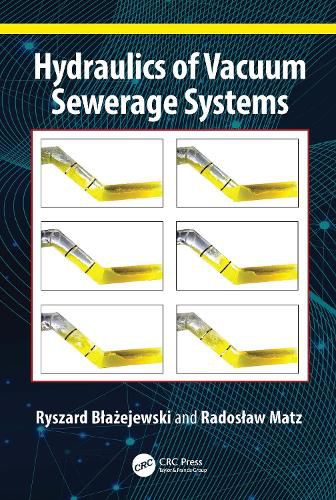Readings Newsletter
Become a Readings Member to make your shopping experience even easier.
Sign in or sign up for free!
You’re not far away from qualifying for FREE standard shipping within Australia
You’ve qualified for FREE standard shipping within Australia
The cart is loading…






In nine chapters, this book presents design guidelines and hydraulic calculation methods of vacuum sewage systems. After a short history of vacuum sewerage, the book covers the theoretical basis of multiphase flows, a description of flows through collection pits, valves and service laterals, empirical approaches for the dimensioning of vacuum pipes, and conceptual, mechanistic and numerical two-phase flow models, including computational fluid dynamics modelling. In addition, methods for calculating forces on vacuum pipelines and principles of the design of vacuum pumping stations are presented.
Furthermore, it summarizes design principles and calculation methods of two- and three-phase flows in both outdoor and indoor vacuum sewer systems, and shows how the systems can be optimized, in particular by reducing their need for electrical energy. In addition to hydraulic methods, principles of structural design of vacuum lines are shown. Each chapter contains worked examples that illustrate the calculation procedures.
The book is intended for designers, constructors, and operators of vacuum sewage systems, and for students of fluid mechanics and environmental engineering. The last chapter lists the needs for further research, which may be useful for master's and doctoral students and their supervisors looking for topics for theses.
$9.00 standard shipping within Australia
FREE standard shipping within Australia for orders over $100.00
Express & International shipping calculated at checkout
In nine chapters, this book presents design guidelines and hydraulic calculation methods of vacuum sewage systems. After a short history of vacuum sewerage, the book covers the theoretical basis of multiphase flows, a description of flows through collection pits, valves and service laterals, empirical approaches for the dimensioning of vacuum pipes, and conceptual, mechanistic and numerical two-phase flow models, including computational fluid dynamics modelling. In addition, methods for calculating forces on vacuum pipelines and principles of the design of vacuum pumping stations are presented.
Furthermore, it summarizes design principles and calculation methods of two- and three-phase flows in both outdoor and indoor vacuum sewer systems, and shows how the systems can be optimized, in particular by reducing their need for electrical energy. In addition to hydraulic methods, principles of structural design of vacuum lines are shown. Each chapter contains worked examples that illustrate the calculation procedures.
The book is intended for designers, constructors, and operators of vacuum sewage systems, and for students of fluid mechanics and environmental engineering. The last chapter lists the needs for further research, which may be useful for master's and doctoral students and their supervisors looking for topics for theses.